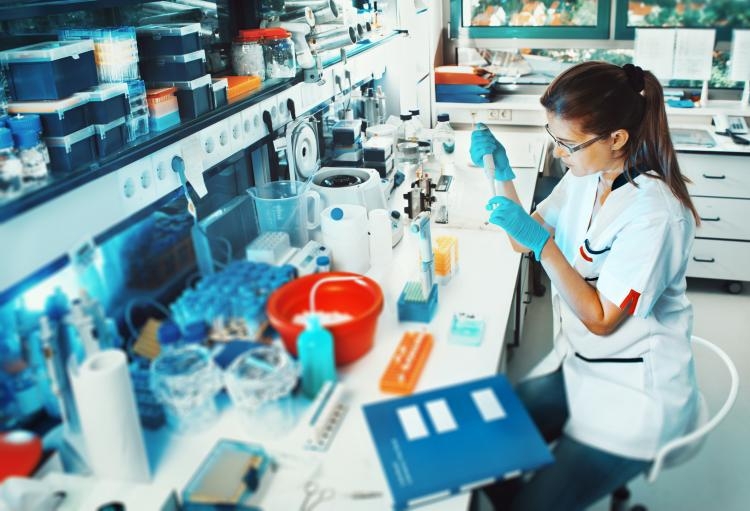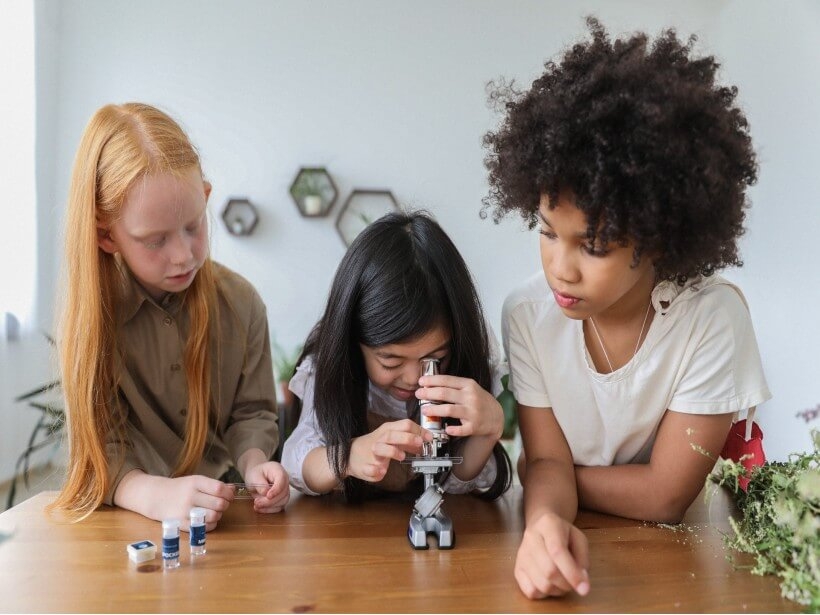International Day of Women and Girls in Science (February 11): Aiming, Significance, What can be done
 |
| This year, the International Day of Women and Girls in Science falls on Thursday. Photo: Eventbrite |
In 2016, the UN declared 11 February as International Day of Women and Girls in Science. The main reason for this declaration was to encourage more girls and women to take up jobs in the fields of science, technology, engineering and mathematics (also known as the STEM subjects). Figures show that although there is no significant difference in ability between boys and girls in maths and science, less than 35 percent of graduates in STEM subjects worldwide are women and there are even fewer in engineering and information technology.
Despite these setbacks, women and girls continue to lead innovation and ground-breaking research. They have created life-saving medicine and broken the sound barrier, explored the universe and laid the foundation to understand the structure of DNA. They are inspiring role models for our future generations, according to UN Women.org.
Our future will be marked by scientific and technological progress, which can only be achieved when women and girls are creators, owners, and leaders of science, technology and innovation. Bridging the gender gap in STEM is vital to achieving the Sustainable Development Goals and for creating infrastructure, services and solutions that work for all people.
On 11 February, we’re celebrating International Day of Women and Girls in Science and calling on everyone to smash stereotypes, defy gender biases and defeat discrimination that hold women and girls back in STEM fields.
The business community, science and research institutions have a stake in bridging the gender gap. UN Women calls for investment and opportunities for women and girls to learn, grow and innovate in science and technology, and for companies around the world to adopt the Women’s Empowerment Principles that promote gender equality and women’s empowerment in the workplace, marketplace and the community.
International Day of Women and Girls in Science: Addressing and Transforming the Gender Gap
 |
| Photo: Time and Date |
UNESCO’S International Day of Women and Girls in Science on 11 February highlights the achievements and challenges of female researchers and scientists from around the globe in an effort to inspire, empower and support the visions and aspirations of young women – in ways that go beyond mere gender awareness, says International Science Council.
“As a woman, a mother of two and a scientist, I have often faced criticism and disapproval – sometimes implicit, sometimes explicit,” says Dragana Ilic. An Associate Professor of Astrophysics at the University of Belgrade, and member of the International Astronomical Union, Ilic was awarded the Loreal UNESCO Fellowship for Women in Science for her achievements. She will be speaking at UNESCO on the importance of gender equality in science. “We need a change in the paradigm and notion of what a woman’s role in society is. We need to break stereotypes. Without that fundamental change in society, there can be no change in individual fields such as science.”
Though changes in the system are painful and slow, Ilic highlights the importance of continuing the hard work toward gender equality in leadership and decision-making positions. “Women scientists are the best role-models for girls. We can inspire them to be whatever they want and do whatever they are best at. We have to show them it’s possible and that is what will motivate many to follow in our footsteps and beyond.”
Shamila Nair-Bedouelle, UNESCO’s Assistant Director-General for Natural Sciences, also highlights the need to change science systems to reflect gender diversity. “The under-representation of woman and girls, with their particular point of view, in science, technology and innovation, creates a risk of bias in the identification of problems and creation of solutions, such that science cannot be inclusive in addressing the needs of societies”, she says.
Why is it important to involve more women and girls in science?
When one group of people dominates a field of study, whether it's an age group, a cultural group or a gender, there is danger of creating a narrow view of the subject. Including more women in male-dominated areas will bring in fresh points of view, new talent and creativity. It can also help increase women's social and financial position in some countries, British Council cites.
Why aren't more girls taking up careers in STEM subjects?
This is a difficult and complicated question. A number of answers have been suggested.
Early years
Some suggest that girls have less experience of activities and toys that encourage an interest in science. Others suggest that girls are more critical of their abilities and tend to underestimate themselves, so they might not think they're 'good enough' to study a STEM subject at university.
Making choices at school
Studies found that girls' test results in science subjects were as good as boys'. But since they often also do well in other subjects, girls have more choices when deciding what to study. This has an obvious influence on their future choice in jobs.
Entering the world of work
Another factor could be the fact that the thought of being one of a small minority on a university course, or in a job, may discourage girls from preparing for a career in research or engineering. There is a common fear that if you are in a minority, you will suffer discrimination and you will need to work much harder in order to succeed.
What can be done to encourage girls to take up science as a career?
 |
| Photo: TInnGo Observatory |
There are a number of things that can be done to encourage girls to consider a career in science.
Early years
Parents and schools can introduce all children – boys and girls – to activities and toys that encourage them to build and make things and get them interested in exploring the world around them and how it works.
Making choices at school
A number of organizations send women scientists to talk to girls at school about their work. Some schools encourage older girls who are studying STEM subjects to talk to younger students in their schools about their passion for their subject. University and research facilities open their laboratories to schools so that the students can experience hands-on scientific research.
Entering the world of work
More and more workplaces and science departments are using mentor programmes to help and support women when they are working in a minority. Women in senior roles are often very keen to offer support to younger women entering their field.
Role models
Probably one of the most important things is to make sure that girls see plenty of examples of successful women scientists in the news and in the media.
If you want to find out more about women in science and this special day, look for #WomenInScience on social media.
| “Without women in science, we would lose human creativity and the ability that half of the world’s population possess, which is so critical to accelerating progress of science.” - Lingadahalli Subrahmanya Shashidhara - |
|
National Girl Child Day is celebrated in India on January 24 to protect the rights of girl children and provide maximum support and facilities to ... |
|
International Day of Education 2021: This year's theme for International Education Day is "Recover and Revitalize Education for the COVID-19 Generation." |
|
Valentine's Day is celebrated annually on February 14 and a celebration of romance and love in many regions of the world. Stay tuned to ... |





























